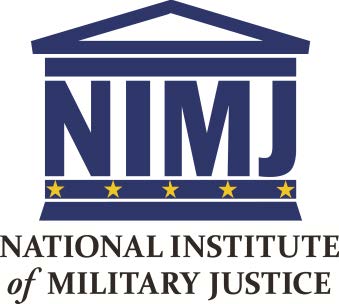|
UP PERISCOPE Dateline: 6 November 2020 (as of 1000); a summary of the week’s events. SUPREME COURT CAAF
Once again, an appellate court grant on a Grosty issue. There is no ACCA opinion on their website so we could assume a summary disposition. The ACCA does not publish summary dispositions unlike NMCCA. ACCA
AFCCA
Appellant was convicted of drug offenses, a DV assault, and communicating a threat; for which he was sentenced to a BCD, 19 months, RiR to E-3, and a reprimand. All the issues raised when done as Grosty’s., several of which were discussed. Finding no errors, the findings and sentence were affirmed.
1. Factual sufficiency on the SA by bodily harm. 2. IAC (failure to submit a RILO timely, harassing behavior toward a victim, and offering a theory that conceded guilt. 3. Cruel and unusual punishment while confined for not getting “proper medical treatment.” On the RILO. The AF normally suspends court-martial processing if a RILO is submitted within seven days of receipt of charges. If the RILO is submitted later then normally the Government is permitted to proceed to trial. The question then becomes a judgement of the military judge whether to grant continuances awaiting a result on the RILO. Note how this is different to Army practice.
1. Factual sufficiency based on an entrapment defense. 2. Denial of expert assistance. 3. Error to instruct on false exculpatory statements. United States v. Quezada, an NMCCA case on this issue was noted in the 30 October 2020 UP.
Again, in a growing trend, one of the issues was a victim-impact statement. For those of us who have been doing CP cases for many years you will recognize the issue—it is the “Vicky” series and the associated statements commonly offered in sentencing. There are other ‘series’ that have been around for years. The court itself cites to several of these cases: United States v Barker, 77 M.J. 377 (C.A.A.F. 2018); United States v. Kearney, 672 F. 3d 81 (1st Cir. 2012); United States v. McDaniel, 631 F.3d 1204 (11th Cir. 2011), see also, United States v. McKinley, No. 201000120, 2013 CCA LEXIS 189 (N-M. Ct. Crim. App. Feb. 28, 2013); United States v. Gallaway, No. 201000248, 2011 CCA LEXIS 390 (A. Ct. Crim. App. Oct. 28, 2011); United States v. Beaty, 70 M.J. 39 (C.A.A.F. 2010). The court notes something not to be forgotten. 1. The statements are not evidence. 2. Because not evidence, Mil. R. Evid. 403 probably does not apply. See United States v. Hamilton, 77 M.J. 579 (A. F. Ct. Crim. App. 2017) (en banc), aff’d 78 M.J. 335 (C.A.A.F. 2019). 3. “When there is error regarding the presentation of victim statements under R.C.M. 1001A, the test for prejudice “is whether the error substantially influenced the adjudged sentence.” When determining whether an error had a substantial influence on a sentence, this court considers the following four factors: “(1) the strength of the Government's case, (2) the strength of the defense case, (3) the materiality of the evidence in question, and (4) the quality of the evidence in question.” “An error is more likely to be prejudicial if the fact was not already obvious from the other evidence presented at trial and would have provided new ammunition against an appellant.” (Citations omitted.) CGCCA NMCCA
In the News—pending appellate cases. Worth the Read.
· Prof. Colin Miller (a favorite of mine) blogs: Supreme Court of New Mexico Lays Out Four Factor Test for Forfeiture by Wrongdoing.In Farrington, the court adopted this four factor test for the forfeiture by wrongdoing exception to apply: (1) the declarant was expected to be a witness; (2) the declarant became unavailable; (3) the defendant's misconduct caused the unavailability of the declarant; and (4) the defendant intended by his misconduct to prevent the declarant from testifying. Appellate Advocacy. · Murray, Justin, Policing Procedural Error in the Lower Criminal Courts (August 17, 2020). Fordham Law Review, Forthcoming, NYLS Legal Studies Research Paper No. 3675869, Available at SSRN: https://ssrn.com/abstract=3675869. The criminal justice system depends on reviewing courts to formulate norms of procedural law and to make sure those norms are actually followed in the lower courts. Yet reviewing courts are not performing either of these functions very well. No single factor can fully explain why this is the case, for there is plenty of blame to go around. But the harmless error rule is a major culprit. The conventional approach to harmless error review prohibits reversal of a defendant’s conviction or sentence, even when the law was violated during proceedings in the lower court, unless that violation influenced the outcome below. This limitation impedes effective oversight of the lower courts in two significant ways. First, it enables trial judges, prosecutors, and other relevant entities (such as a district attorney’s office, to name one example) to persistently evade accountability for procedural errors, diminishing their incentives to comply with legal norms. And second, it provides reviewing courts with a handy tool to avoid resolving legal claims on their merits. Instead of holding that an error did or did not occur, thereby helping trial judges, prosecutors, and others learn what the law requires going forward, reviewing courts can—and often do—affirm on fact-bound harmless error grounds without ever adjudicating the legality of the challenged conduct. These failings call for a major shift in how courts review procedural error. I propose that, in addition to examining whether an error affected the outcome, as current law directs, a reviewing court should also consider whether (1) reversal would substantially help to prevent future errors, (2) the error caused substantial harm to a legally protected interest unrelated to the outcome, and (3) the benefits of reversal, as tabulated in the previous steps, outweigh its costs. After making the case for this framework and discussing how to operationalize each of its components, I then explore, a bit more tentatively, whether the same set of ideas could help stimulate much-needed rethinking of other controversial rules that further obstruct the policing of procedural error in the lower criminal courts. *Brought to you as a product of the MilitaryLawNewsSpeakBureau. Phil CaveMJ Editor
0 Comments
Your comment will be posted after it is approved.
Leave a Reply. |
Links
CAAF -Daily Journal -Current Term Opinions ACCA AFCCA CGCCA NMCCA Joint R. App. Pro. Global MJ Reform LOC Mil. Law Army Lawyer Resources Categories
All
Archives
April 2022
|



